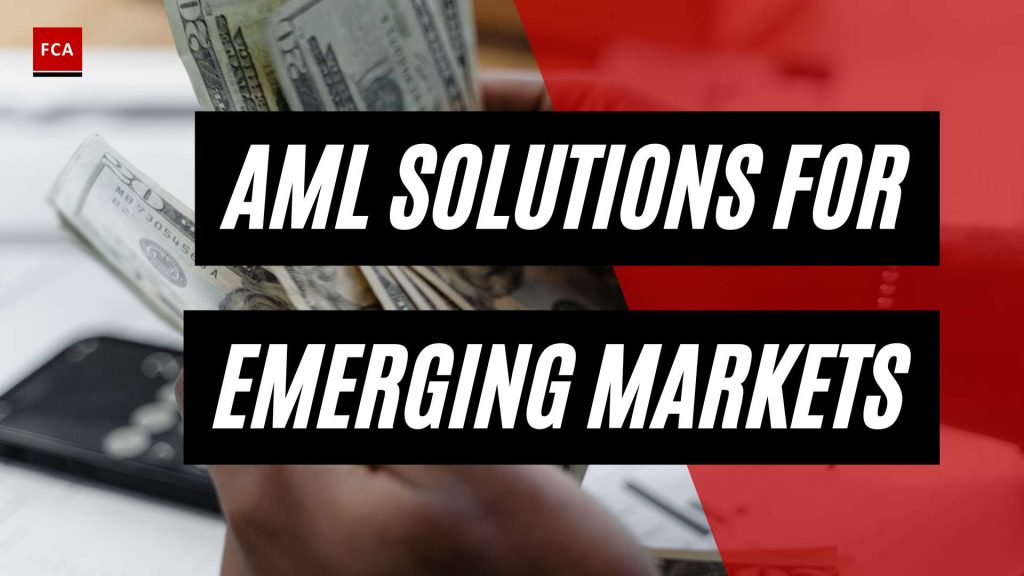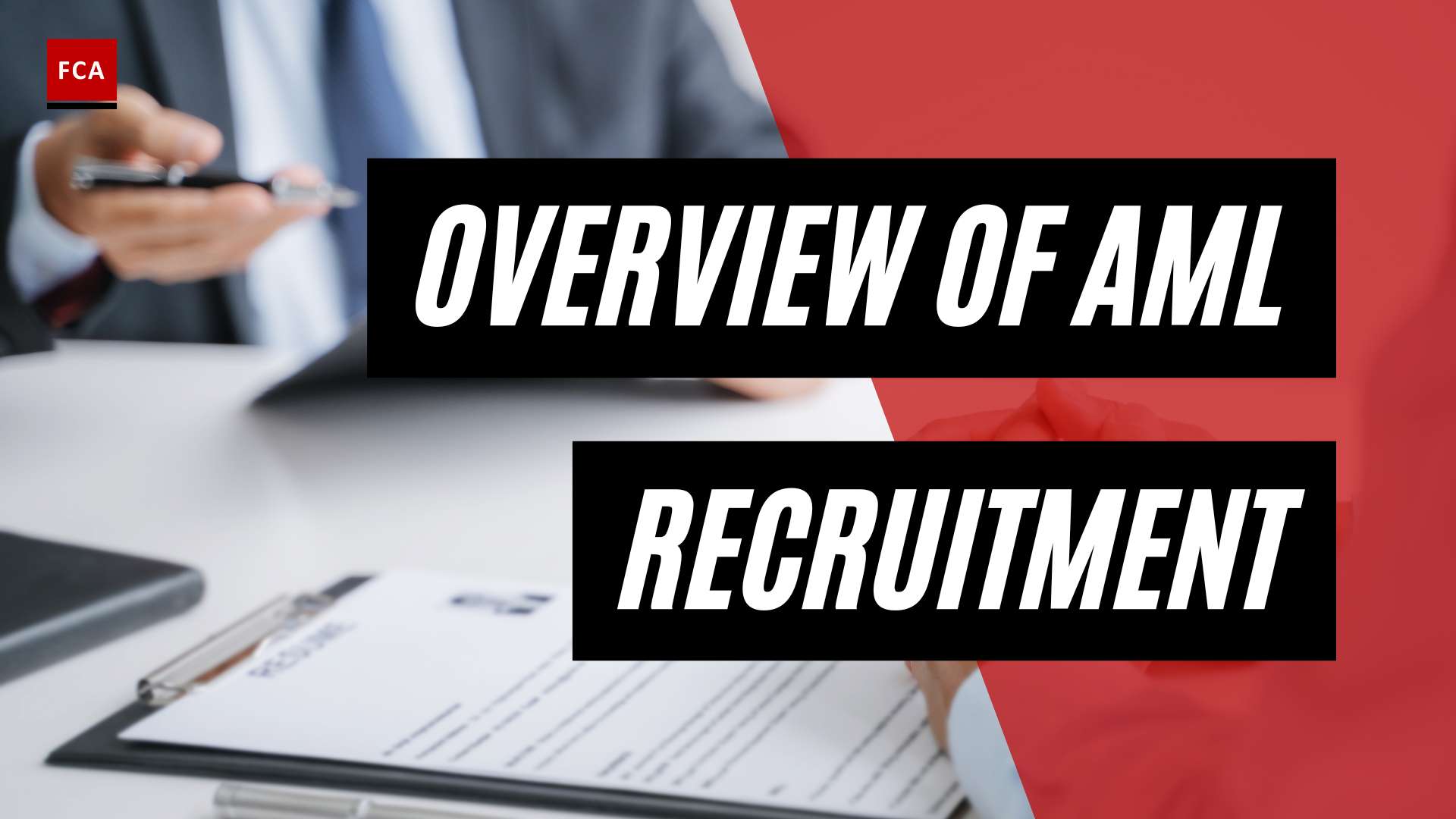AML Compliance in Emerging Markets
In the realm of Anti-Money Laundering (AML) compliance, emerging markets present unique challenges and considerations. Understanding the importance of AML compliance in these markets is crucial for professionals working in compliance, risk management, anti-money laundering, and anti-financial crime.
Understanding the Importance of AML Compliance in Emerging Markets
AML compliance is of utmost importance in emerging markets due to various factors. These markets often experience rapid economic growth, attracting investment and financial transactions. However, this growth can also make them susceptible to money laundering and illicit financial activities.
By implementing robust AML compliance measures, emerging markets can safeguard their financial systems, maintain stability, and foster trust among global stakeholders. Effective AML compliance helps prevent the infiltration of illicit funds, protects legitimate businesses, and contributes to the overall integrity of the financial sector.
Emerging markets must adhere to international AML standards and regulations, ensuring that they are not perceived as weak links in the global fight against financial crime. Compliance with these standards enhances their reputation, attracts foreign direct investment, and promotes economic growth.
Challenges and Unique Considerations for AML Compliance in Emerging Markets
AML compliance in emerging markets brings forth a range of challenges and unique considerations. These markets often have different regulatory frameworks, cultural norms, and levels of technological advancement compared to more established economies. These factors can impact the effectiveness and implementation of AML compliance measures.
One primary challenge is the evolving regulatory landscape in emerging markets. These markets may have recently introduced or are in the process of developing AML regulations, which can be subject to frequent updates and changes. Staying updated with the latest AML regulations in these markets is crucial to ensure compliance.
Additionally, emerging markets may face resource constraints, including limited expertise and financial resources for implementing comprehensive AML compliance programs. This can hinder the development of robust systems and processes for risk assessment, due diligence, and transaction monitoring.
Cultural and language considerations also play a role in AML compliance in emerging markets. Understanding local customs, business practices, and languages is essential for effective communication and building relationships with stakeholders. This understanding can aid in identifying potential red flags and suspicious activities within the local context.
Technological advancements and automation solutions are increasingly being adopted in AML compliance. However, emerging markets may face challenges in adopting and implementing these technologies due to infrastructure limitations and varying levels of digitalization. Finding innovative solutions that align with the specific needs and capabilities of these markets is crucial.
By acknowledging and addressing these challenges and unique considerations, AML compliance professionals can develop tailored strategies and solutions that effectively combat money laundering and illicit financial activities in emerging markets.
In the next sections, we will delve deeper into the key components of AML compliance solutions and explore how these solutions can be tailored to meet the specific requirements of emerging markets.
Key Components of AML Compliance Solutions
To effectively address Anti-Money Laundering (AML) risks in emerging markets, it is crucial to implement comprehensive AML compliance solutions. These solutions typically consist of several key components designed to mitigate the risks associated with money laundering and terrorist financing. The key components of AML compliance solutions in emerging markets include risk assessment and due diligence, know your customer (KYC) procedures, and transaction monitoring and suspicious activity reporting.
Risk Assessment and Due Diligence
A robust risk assessment process is essential for identifying and understanding the specific AML risks prevalent in emerging markets. This involves conducting a thorough analysis of the internal and external factors that may expose an organization to money laundering and terrorist financing risks.
During the risk assessment process, organizations should consider factors such as the local regulatory environment, the nature of their business relationships in emerging markets, and the unique AML risks associated with those markets. By conducting due diligence on customers, business partners, and third-party intermediaries, organizations can assess the inherent risks and make informed decisions about engaging in business relationships.
Know Your Customer (KYC) Procedures
Implementing effective KYC procedures is crucial in preventing money laundering and ensuring compliance with AML regulations. KYC procedures involve verifying the identity of customers and understanding their financial activities to detect any potential suspicious transactions.
In emerging markets, where the risk of money laundering may be higher due to weak regulatory frameworks or less developed financial systems, robust KYC procedures are of utmost importance. This may involve collecting and verifying customer identification documents, understanding the purpose and intended nature of the business relationship, and conducting ongoing monitoring of customer transactions.
Transaction Monitoring and Suspicious Activity Reporting
Transaction monitoring plays a vital role in detecting and reporting suspicious activities that may indicate potential money laundering or terrorist financing. This involves implementing systems and processes to monitor customer transactions, detect unusual patterns, and flag any suspicious activities.
In emerging markets, where the AML risks may be higher, organizations should establish transaction monitoring mechanisms that are capable of handling the unique challenges and complexities of these markets. By setting up automated systems and utilizing advanced technologies, organizations can enhance their ability to identify and report suspicious activities promptly.
To ensure compliance with AML regulations, organizations should establish clear protocols for reporting suspicious activities to the appropriate authorities. This helps facilitate investigations and contributes to the overall efforts in combating money laundering and terrorist financing.
By focusing on these key components of AML compliance solutions, organizations operating in emerging markets can strengthen their AML frameworks and mitigate the risks associated with money laundering and terrorist financing. It is important to adapt these components to the specific regulatory requirements, cultural considerations, and technological advancements relevant to each emerging market. For more information on AML compliance in emerging markets, refer to our article on aml compliance in emerging markets.
Tailoring AML Compliance Solutions for Emerging Markets
As emerging markets present unique challenges and considerations in the realm of Anti-Money Laundering (AML) compliance, it is essential to tailor compliance solutions to suit the specific requirements of these regions. This section will explore three key aspects that warrant attention when developing AML compliance solutions for emerging markets: local regulatory requirements and frameworks, cultural and language considerations, and technology and automation solutions.
Local Regulatory Requirements and Frameworks
When designing AML compliance solutions for emerging markets, it is crucial to have a deep understanding of the local regulatory landscape. Each country may have its own set of AML regulations, laws, and reporting requirements. Familiarizing oneself with the AML regulations in emerging markets is vital to ensure compliance.
To tailor AML compliance solutions effectively, organizations should conduct thorough research and engage with local legal experts or consultants who possess knowledge of the specific AML compliance requirements in the target market. By understanding and adhering to the local regulatory frameworks, organizations can develop robust AML programs that align with the expectations of the local authorities.
Cultural and Language Considerations
Cultural and language considerations play a significant role in AML compliance in emerging markets. When designing compliance solutions, it is important to recognize and respect cultural practices and norms, as they may impact the implementation of AML policies and procedures.
Language barriers can also pose challenges in effectively communicating AML requirements and training materials to employees and stakeholders in emerging markets. To overcome this obstacle, organizations should consider translating AML compliance materials into the local language to ensure clarity and comprehension. Additionally, providing training and education in the local language can enhance understanding and promote a culture of compliance.
Technology and Automation Solutions
Technology and automation solutions can greatly enhance the efficiency and effectiveness of AML compliance in emerging markets. Implementing robust AML software systems can assist with various aspects of compliance, including customer due diligence, transaction monitoring, and suspicious activity reporting.
Automation solutions can streamline the compliance process, reducing the risk of human error and enabling organizations to identify potential AML risks more promptly. By leveraging technology, organizations can efficiently manage the increasing volume of data and transactions, ensuring compliance with AML regulations in a more cost-effective manner.
However, it is important to note that technology solutions should be carefully selected to align with the local regulatory requirements and infrastructure of the emerging market. Organizations must ensure that the chosen technology solutions are adaptable, scalable, and capable of meeting the unique needs of the market.
By tailoring AML compliance solutions to address local regulatory requirements, cultural considerations, and leveraging appropriate technology and automation solutions, organizations can navigate the complexities of AML compliance in emerging markets more effectively. It is crucial to stay up-to-date with the latest AML compliance trends in emerging markets to continuously adapt and refine compliance strategies in accordance with evolving regulatory landscapes.
Best Practices for AML Compliance in Emerging Markets
To ensure effective anti-money laundering (AML) compliance in emerging markets, organizations must adopt and implement best practices that address the unique challenges and requirements of these dynamic environments. Here are three key best practices for AML compliance in emerging markets:
Establishing a Robust AML Compliance Program
A robust AML compliance program is the foundation for mitigating money laundering and terrorist financing risks in emerging markets. It should include clear policies, procedures, and controls that align with local regulatory requirements and international standards. This program should encompass the following elements:
-
Risk Assessment: Conducting a comprehensive risk assessment specific to the emerging market is crucial. This helps identify and prioritize the unique AML risks associated with the market, including factors such as political stability, corruption levels, and the prevalence of organized crime.
-
Customer Due Diligence (CDD): Implementing thorough Know Your Customer (KYC) procedures is essential for verifying the identity of customers, understanding their business activities, and assessing the potential risks they may pose. This includes collecting and verifying customer information, conducting ongoing monitoring, and periodically updating customer records.
-
Transaction Monitoring: Establishing robust transaction monitoring systems and procedures allows for the detection of suspicious activities. This involves setting up automated systems that analyze and flag transactions that deviate from expected patterns, thresholds, or known typologies of money laundering.
Training and Education for Staff
In emerging markets, providing comprehensive training and education to staff is vital for fostering a culture of compliance. A well-trained and knowledgeable team can effectively identify and address potential AML risks. Key considerations for training and education include:
-
AML Regulations and Requirements: Educate staff on the specific AML regulations and requirements applicable in the emerging market. This includes understanding local laws, regulations, and guidelines related to AML, as well as international AML standards set by organizations such as the Financial Action Task Force (FATF).
-
AML Policies and Procedures: Ensure that employees are familiar with the organization’s AML policies and procedures, including CDD processes, transaction monitoring protocols, and reporting obligations. Regular training sessions and refresher courses can help reinforce knowledge and keep staff up to date with evolving AML regulations.
Continuous Monitoring and Evaluation
Continuous monitoring and evaluation of AML compliance efforts are essential for detecting and addressing any weaknesses or gaps in the system. This includes:
-
Internal Audits: Conduct regular internal audits to assess the effectiveness of the AML compliance program. Audits help identify areas for improvement, validate the implementation of policies and procedures, and ensure compliance with regulatory requirements.
-
Risk-Based Approach: Adopt a risk-based approach to AML compliance by regularly reassessing risks and adjusting controls accordingly. This allows organizations to focus their resources on higher-risk areas, ensuring a more targeted and efficient compliance program.
By implementing these best practices, organizations can enhance their AML compliance efforts in emerging markets, effectively mitigating the risks associated with money laundering and terrorist financing. However, it’s important to adapt these practices to the specific regulatory requirements, cultural nuances, and technology landscape of each market. Stay informed about the latest AML compliance trends in emerging markets and continually evaluate and enhance your AML compliance program to stay ahead in the fight against financial crime.
Case Studies: Successful AML Compliance in Emerging Markets
Examining real-world examples of successful anti-money laundering (AML) compliance in emerging markets can provide valuable insights into effective strategies and practices. The following case studies highlight the efforts made by different countries to combat money laundering and illicit financial activities.
Example 1: Country A
Country A, an emerging market with a growing economy, recognized the importance of strengthening its AML compliance framework to maintain financial integrity. The government took proactive measures to enhance its regulatory environment and implement robust AML measures.
- AML Regulations: Country A introduced comprehensive AML regulations that aligned with international standards and best practices. These regulations covered various sectors, including banking, financial services, real estate, and non-profit organizations.
- Risk-Based Approach: The country adopted a risk-based approach, conducting thorough risk assessments to identify and mitigate potential AML risks. This enabled them to allocate resources effectively and prioritize high-risk areas.
- Public-Private Collaboration: Country A fostered collaboration between government agencies, financial institutions, and law enforcement bodies. Regular communication and information sharing facilitated a coordinated effort to combat money laundering.
- Technology Implementation: Leveraging technological advancements, the government introduced advanced transaction monitoring systems and automated reporting tools. This helped streamline AML processes and detect suspicious activities more efficiently.
As a result of these initiatives, Country A experienced a significant reduction in money laundering activities and an increased level of compliance within its financial system.
Example 2: Country B
Country B, another emerging market, faced unique challenges due to its cultural and linguistic diversity. However, the government recognized the importance of tailoring AML compliance solutions to address these specific considerations.
- Cultural Sensitivity: Country B acknowledged the significance of cultural norms and traditions in shaping financial behaviors. AML compliance programs were designed with cultural sensitivity, ensuring that regulations were effectively communicated and understood by all stakeholders.
- Language Support: Recognizing the linguistic diversity within the country, Country B provided multilingual resources and support for compliance-related communication. This helped bridge language barriers and fostered better compliance across different communities.
- Training and Education: The government implemented comprehensive training programs to educate financial institutions and individuals on AML regulations and best practices. This included raising awareness about common money laundering schemes and providing guidance on reporting suspicious transactions.
By addressing cultural and language considerations, Country B achieved higher levels of compliance and strengthened its ability to detect and prevent money laundering activities.
Example 3: Country C
Country C, an emerging market with a rapidly evolving financial sector, focused on continuous monitoring and evaluation as part of its AML compliance efforts.
- Regular Audits: Country C conducted regular audits of financial institutions to assess their compliance with AML regulations. These audits evaluated the effectiveness of internal controls, customer due diligence procedures, and reporting mechanisms.
- Strengthened Oversight: The government established an independent regulatory body responsible for overseeing AML compliance. This entity collaborated closely with financial institutions to ensure adherence to regulations and address any compliance gaps.
- Evolving Regulations: Recognizing the dynamic nature of money laundering techniques, Country C regularly reviewed and updated its AML regulations. This allowed them to stay ahead of emerging risks and adjust compliance requirements accordingly.
By implementing a proactive approach to monitoring and evaluation, Country C demonstrated a commitment to ongoing improvement and staying abreast of evolving AML trends.
These case studies illustrate various approaches taken by emerging markets to strengthen their AML compliance frameworks. By understanding the strategies employed by successful countries, other jurisdictions can learn from their experiences and adapt their own AML compliance programs accordingly.








